UNC-Chapel Hill biologist Bob Goldstein leads DIY microscope-building workshops to empower North Carolina public school teachers.
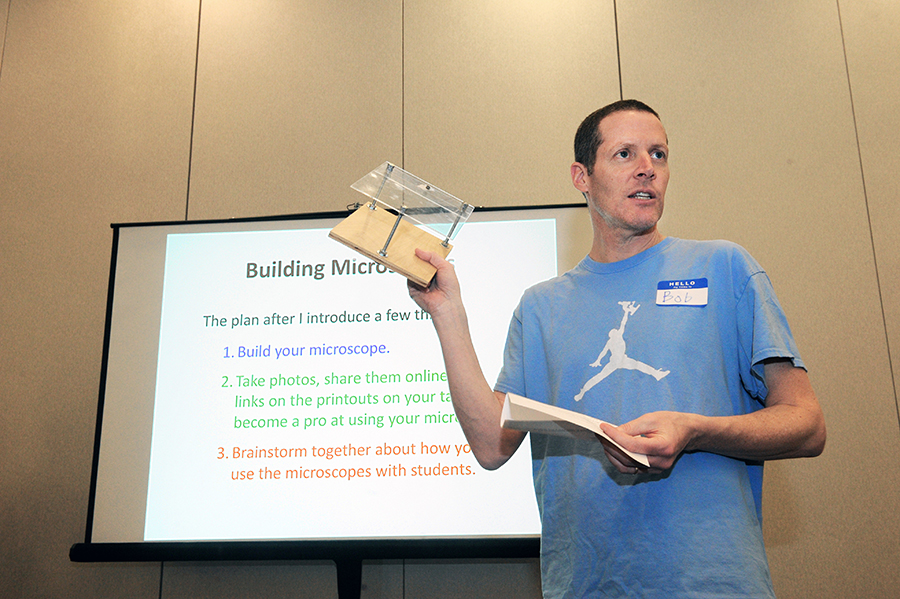
This is a story about the viral spread of something good. Specifically, do-it-yourself microscopes. More broadly, the thrill of science.
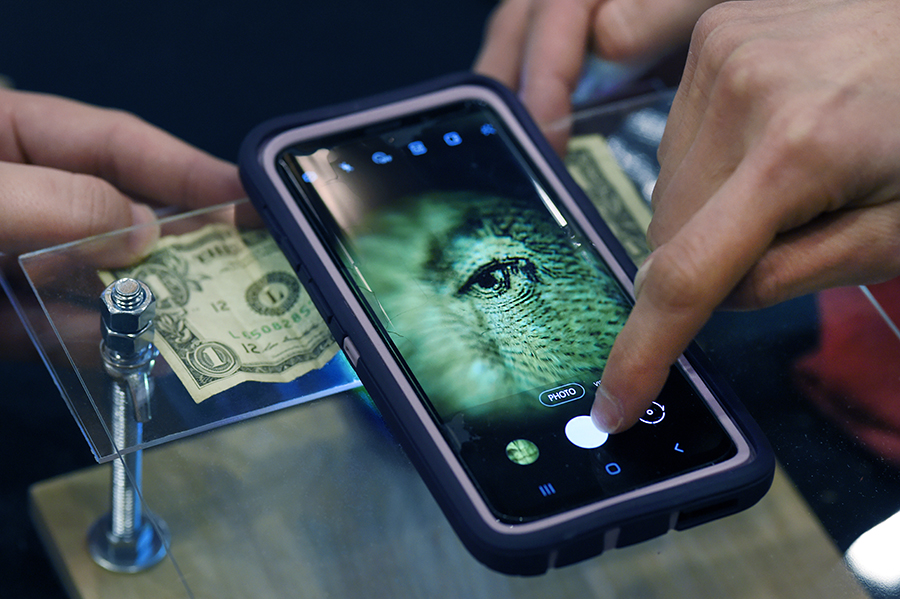
The person spreading the good is Bob Goldstein, a biology professor in UNC’s College of Arts & Sciences. When he’s not teaching or peering through a (very expensive) microscope at tardigrades or C. elegans as part of his groundbreaking lab research, Goldstein leads workshops for North Carolina public school teachers — especially those from resource-strapped school districts — helping them turn $10 worth of hardware-store materials and the smartphone in their pocket into a tool of scientific discovery. The name of the workshop says it all: “Build a simple microscope and keep it!”
Goldstein led his most recent session in early March in Raleigh at the annual conference of the North Carolina Technology in Education Society, or NCTIES, a statewide membership association for educators. The feedback, as with past workshops, was glowing.
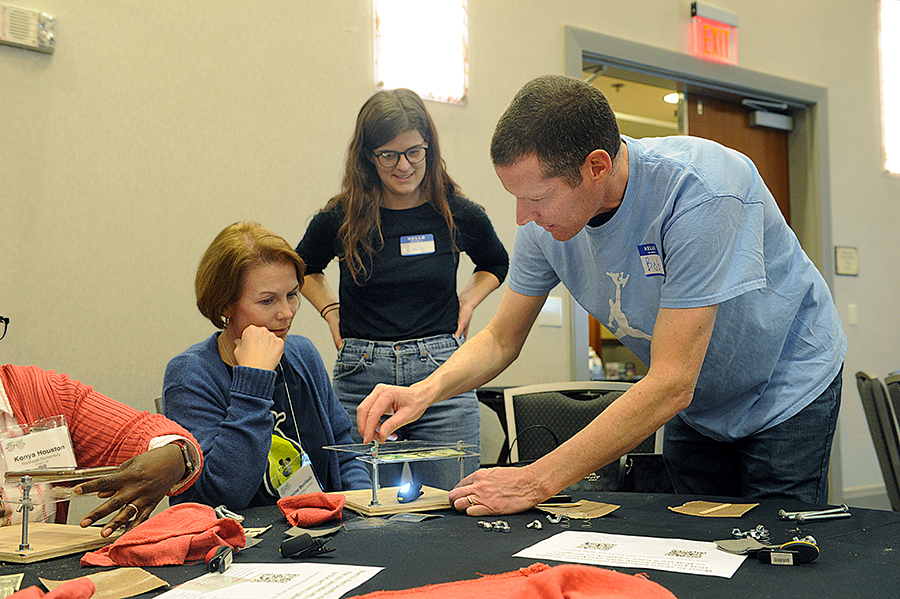
“I can’t believe what I saw with the microscope I built! Amazing!” one attendee tweeted, along with a grid of close-up photographs, including the cells of a red onion and blocky salt crystals.
“I built a microscope! This is the coolest thing ever, my kids are going to LOVE IT!” posted another, who included a video showing her gasping at a magnified image.
“Teachers get really excited when things first come into focus,” Goldstein says.
Goldstein ultimately wants that excitement to reach schoolchildren. “Kids are naturally curious,” he says. “In the long run I’m hoping to shrink the gap between curiosity and being able to do something scientific. What makes me really happy is when teachers say, ‘Once we made these microscopes, kids came in from recess with grass, flowers and bugs to look at just because they were curious.’”
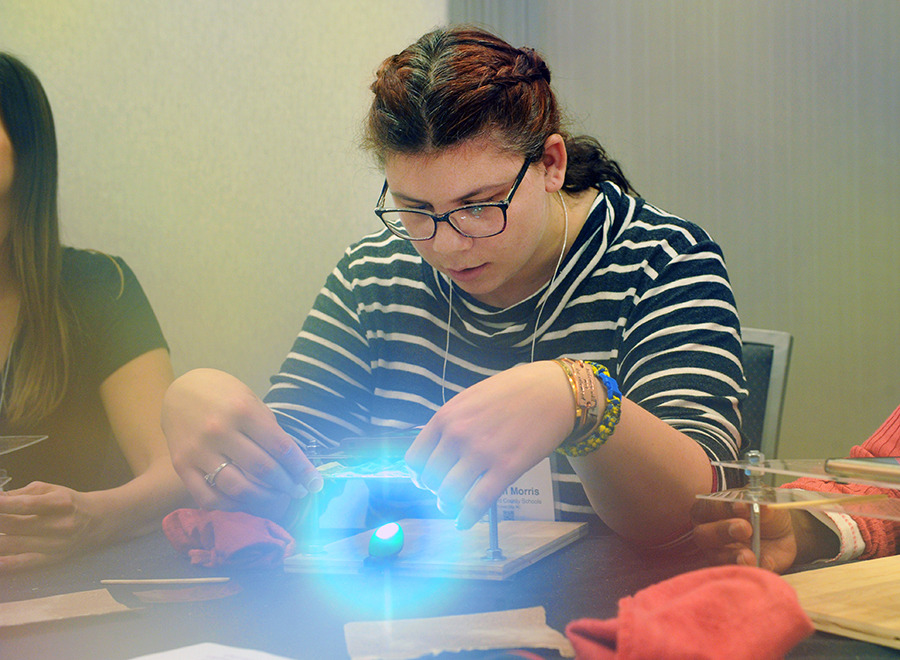
Looking for a project
Goldstein, who joined the UNC faculty in 1999, loves making stuff. He has a graphic artist’s eye. Among other things, he has designed a series of impressive rock-concert-like posters for conference talks and university lectures, again trying to gin up excitement for science.
Back in 2013 Goldstein was looking for something to make when he came across a clever design for a $10 smartphone microscope by Grinnell College graduate Kenji Yoshino on a website called Instructables. Goldstein and his sons, Duncan and Connor, who are also makers at heart, built one of the microscopes using parts from their local hardware store. The DIY device was so impressive — even to a microscopy expert — that Goldstein shared the idea with the STEM coordinator at his children’s elementary school. She was so impressed that she begged Goldstein to teach her fellow teachers. Back he went to the hardware store.
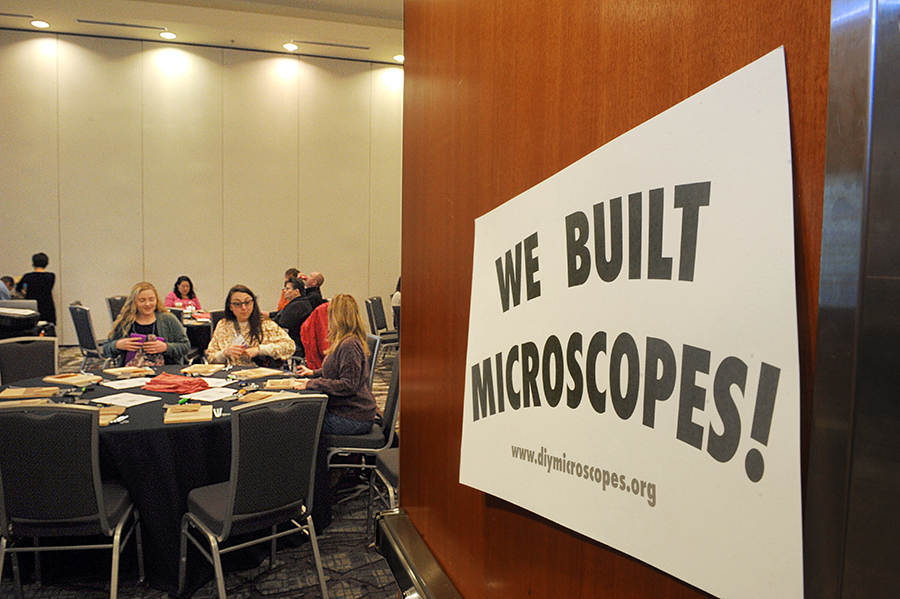
“That became my workshop template,” he says. “After that, I started looking around for who else might like a workshop.”
He hasn’t had to look far. In seven years, Goldstein has led dozens of workshops, helping teachers, museum educators and others build more than 500 microscopes (and keep them!) This month’s 2020 NCTIES was his fourth statewide conference.
Until the spread of the coronavirus, Goldstein had several more workshops scheduled around the state in March and April, including one at a STEM conference in Cullowhee County and another at the Native American Cherokee Central Schools in Swain County.
Goldstein includes a message on his website to North Carolina elementary school teachers: “I’m keen to help schools with large concentrations of low-income students,” he writes. “If your school’s free and reduced lunch percentage is >75% and you have a dozen or more teachers interested in a 90-minute workshop to make a set of about a dozen microscopes for your school, then I’ll gladly try to visit. Free microscopes!”
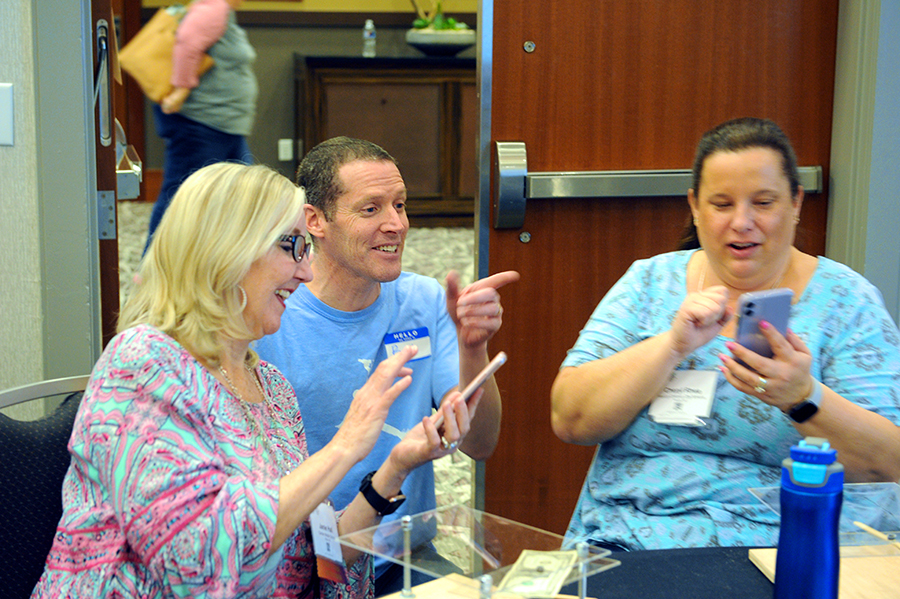
Reaching teachers
Goldstein works hard to make his sessions practical for public-school teachers. He keeps things simple, intentionally not taking prepared slides — or anything else from his lab.
“I want teachers to see that you can do science without having to buy it from somewhere, without needing special equipment,” he says.
In addition to limited resources, Goldstein knows teachers are short on time, so he helps connect the dots between these DIY microscopes and the North Carolina elementary school science curriculum: 2nd grade (insects, animal life cycles), 3rd grade (plants, human body), 4th grade (matter, rocks, light, fossils, adaptations) and 5th grade (cells, plants, human body).
Jordan Morris, science teacher at Chase Middle School in Rutherford County, said cells are part of her 7th grade curriculum. But, she says, her class doesn’t have any functioning microscopes. She signed up for Goldstein’s 2020 NCTIES workshop with the goal of learning how to make a microscope for her students.
“I loved the workshop, and I immediately shared the microscope with both my colleagues and my students as soon as I got back,” she says. She plans to make enough for her class next year. “My students will be able to really see what we are talking about with plant cells. We can look at onion cells instead of just looking at pictures. I am so excited, and I cannot wait for next year!”
Anson County Schools planetarium director Wendy Efird, who also attended the statewide Raleigh workshop, can’t wait to teach her summer STEM campers how to make their own microscopes. “There’s that pride factor of look what I built, and then, Hey, I get to take this microscope home with me,” Efird says. “It ends up being a learning experience for the whole family.”
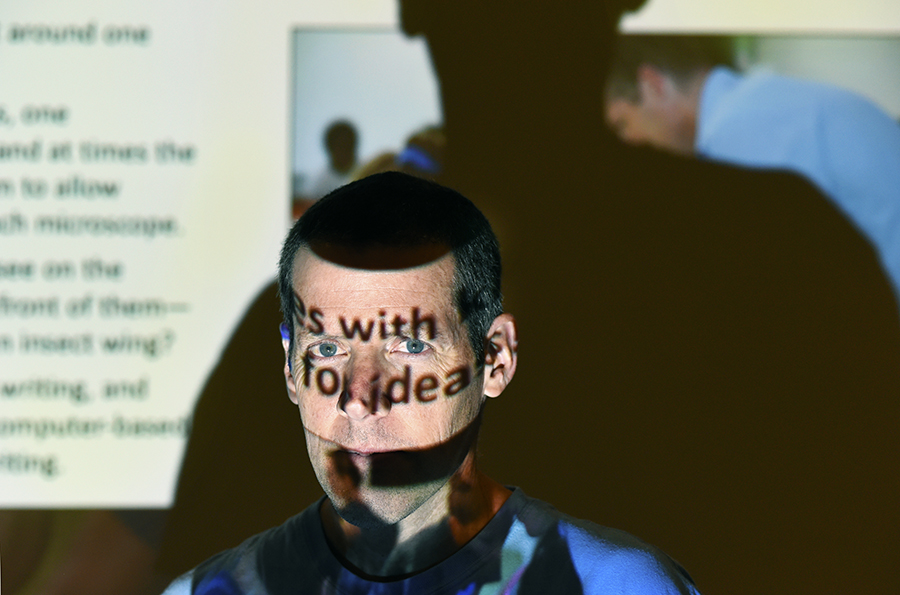
Scaling up
Goldstein funded his first workshops out of pocket. At $10 apiece, he can cover a single school workshop with around $100. He has funded some workshops that were held in museums through some grant funding he has for museum outreach. Now he is applying for grant money to help him scale up. And he’s helping others, including colleagues he has met at scientific conferences, lead their own workshops. One scientist who learned from Goldstein has begun teaching workshops in Guatemala, and another has done the same in El Salvador.
Meanwhile, UNC’s Johnny Appleseed of science continues blanketing North Carolina. “I want to do more workshops,” he says. “It’s a labor of love.”
Learn more about Goldstein’s microscope-building workshops at http://www.diymicroscopes.org.
***
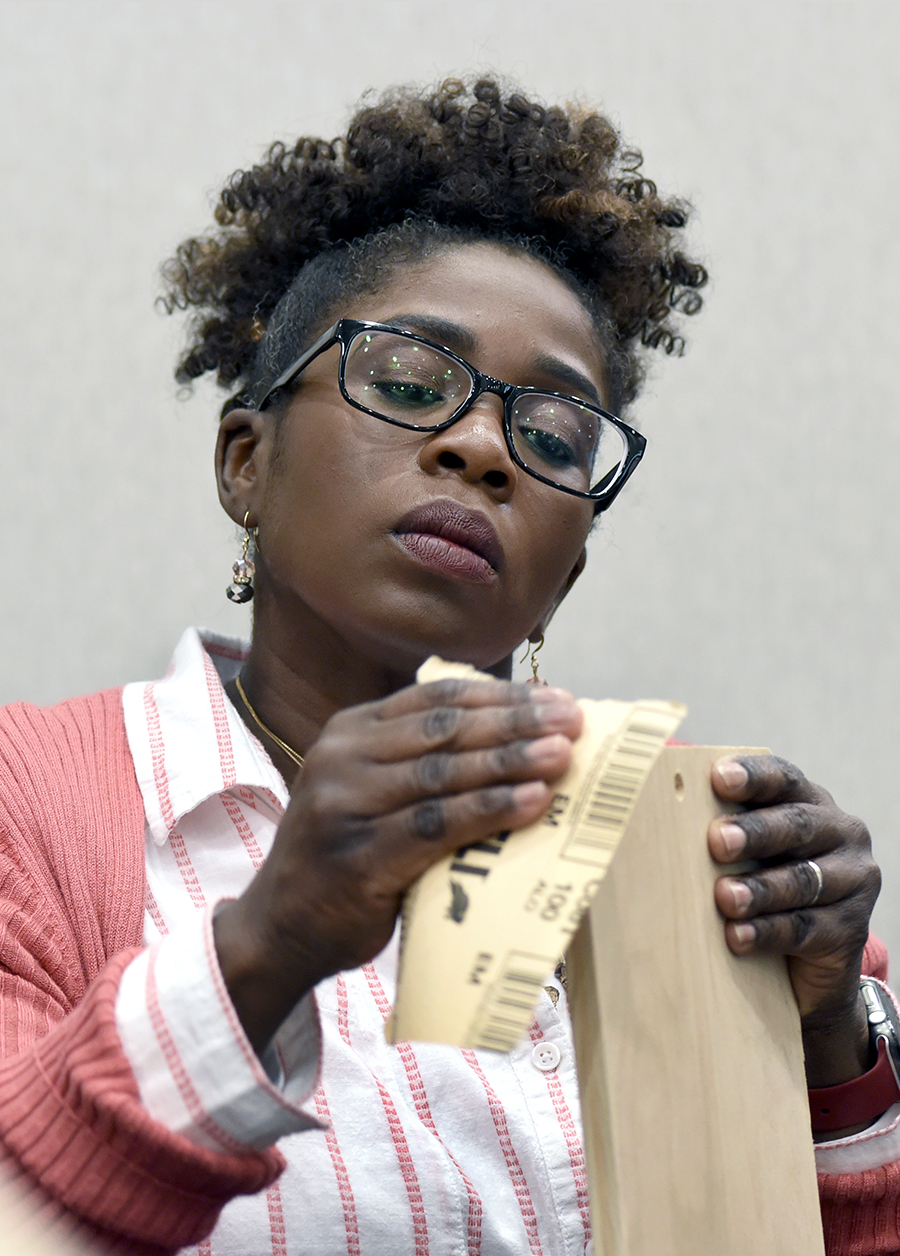
Whiz Kit
The DIY microscope Goldstein instructs North Carolina teachers to make has many advantages.
Low cost. Other than a smartphone or tablet computer, the parts include a hardback-book-sized piece of plywood, two small pieces of Plexiglas, a handful of nuts and bolts, the lens from a cheap laser pointer and an LED flashlight.
Great optics. The resolution is 10 times better than the naked eye. That’s enough for clear views of pollen in full color on a flower petal or the cells in a red onion.
Ease of use. Lay your phone on the Plexiglas stage, insert something cool to view —pocket lint, paper money, a gummy worm — and focus the image by twisting a couple of wing nuts.
“The wing nuts work easier than the fine adjustment on a standard microscope,” says Efird. “It’s so much easier to manage because you can see it on the phone. The children have a hard time focusing a microscope because they usually look through the lens and see their eyelashes.”
Group viewing. Along with the annoyance of eyelashes, normal microscopes are for single viewers only. “When kids use our DIY microscope, they’re gathered around in a group looking at the same thing,” Goldstein says. “That changes the experience completely.”
Pictures! Snapping digital images of some magnified wonder is as easy as taking a selfie.
By Logan Ward, College of Arts & Science
